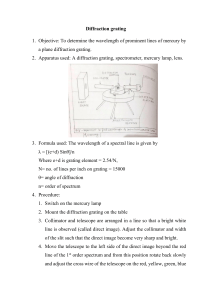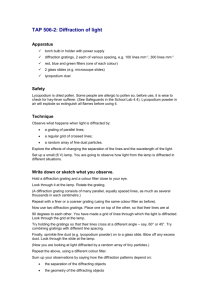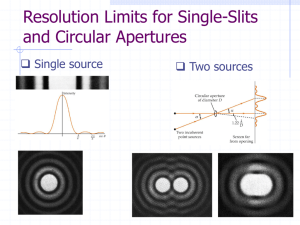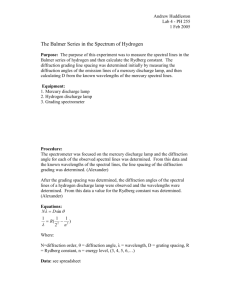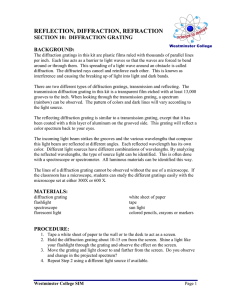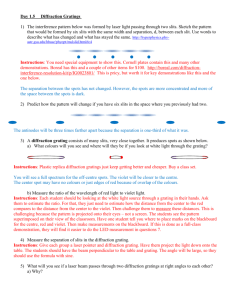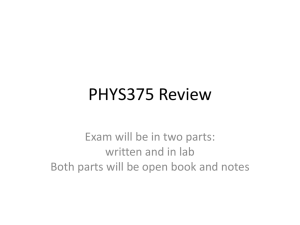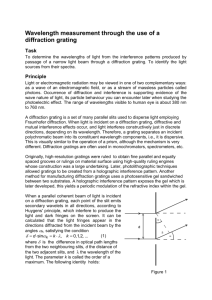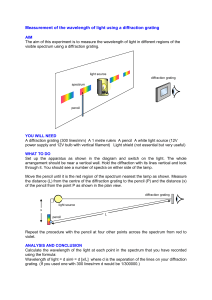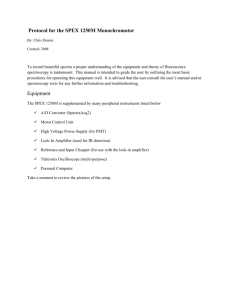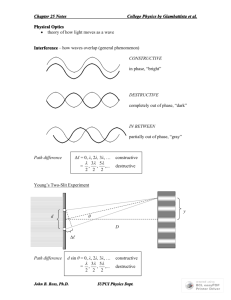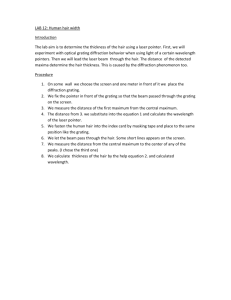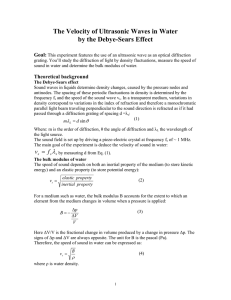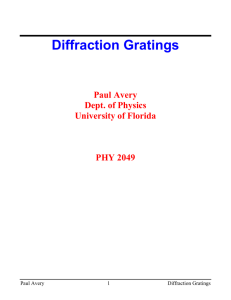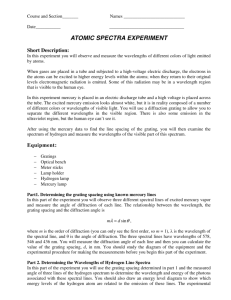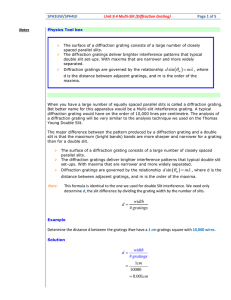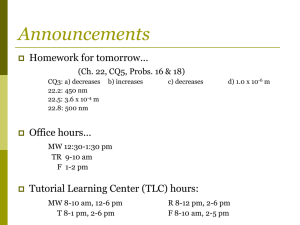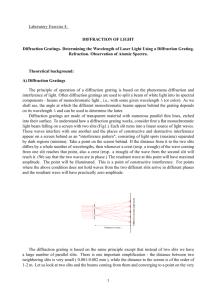DIFFRACTION GRATINGS
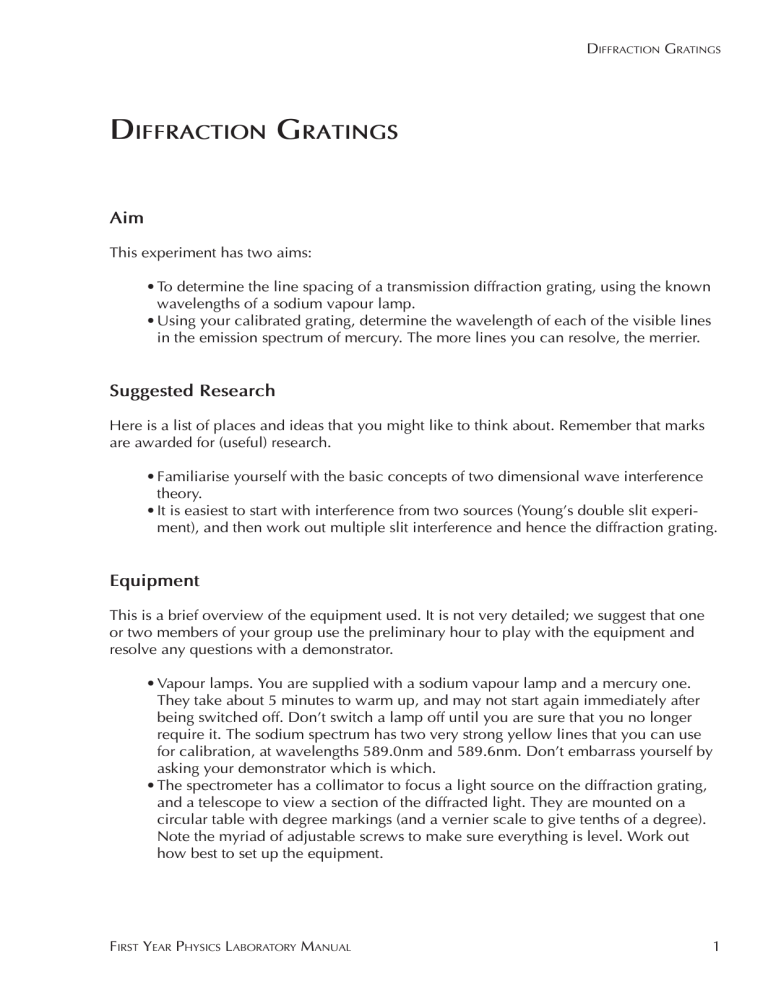
D
IFFRACTION
G
RATINGS
D
IFFRACTION
G
RATINGS
Aim
This experiment has two aims:
∙ To determine the line spacing of a transmission diffraction grating, using the known wavelengths of a sodium vapour lamp.
∙ Using your calibrated grating, determine the wavelength of each of the visible lines in the emission spectrum of mercury. The more lines you can resolve, the merrier.
Suggested Research
Here is a list of places and ideas that you might like to think about. Remember that marks are awarded for (useful) research.
∙ Familiarise yourself with the basic concepts of two dimensional wave interference theory.
∙ It is easiest to start with interference from two sources (Young’s double slit experiment), and then work out multiple slit interference and hence the diffraction grating.
Equipment
This is a brief overview of the equipment used. It is not very detailed; we suggest that one or two members of your group use the preliminary hour to play with the equipment and resolve any questions with a demonstrator.
∙ Vapour lamps. You are supplied with a sodium vapour lamp and a mercury one.
They take about 5 minutes to warm up, and may not start again immediately after being switched off. Don’t switch a lamp off until you are sure that you no longer require it. The sodium spectrum has two very strong yellow lines that you can use for calibration, at wavelengths 589.0nm and 589.6nm. Don’t embarrass yourself by asking your demonstrator which is which.
∙ The spectrometer has a collimator to focus a light source on the diffraction grating, and a telescope to view a section of the diffracted light. They are mounted on a circular table with degree markings (and a vernier scale to give tenths of a degree).
Note the myriad of adjustable screws to make sure everything is level. Work out how best to set up the equipment.
F
IRST
Y
EAR
P
HYSICS
L
ABORATORY
M
ANUAL
1
D
IFFRACTION
G
RATINGS
Designing your experiment
The proceedure is very similar to the previous labs. Here we just include a list of things to keep in mind. Almost everything from the pendulum experiment is relevant, so have another read through that.
∙ There are several people in your group, and you may like to think about different roles that you can play.
∙ All members of the group should have a go at actually doing the experiment
(i.e. manipulating the equipment). This is useful because it can help make sure that no mistakes were made.
∙ Work out how to get your final answer from the raw data. This process is known as
“data reduction”. How will you reduce your data to get a final answer and an uncertainty? Consider using tables and graphs.
∙ Think about all of the variables in your equations. Which of these will prove to be the largest sources of error, and how can this uncertainty be reduced?
Experimental Uncertainty
Processing your uncertainties is slightly more difficult in this experiment than the others, due to the trigonometric function in the formulae. To get an error in the line spacing, you must combine errors in the wavelength and the angle. Similarly, to get the error in the mercury wavelengths, you have to include the error in line spacing and in the angle measurement. At the start of your lab manual are some notes on errors. We suggest you read it, especially the bit about the differential rule.
2 F
IRST
Y
EAR
P
HYSICS
L
ABORATORY
M
ANUAL
